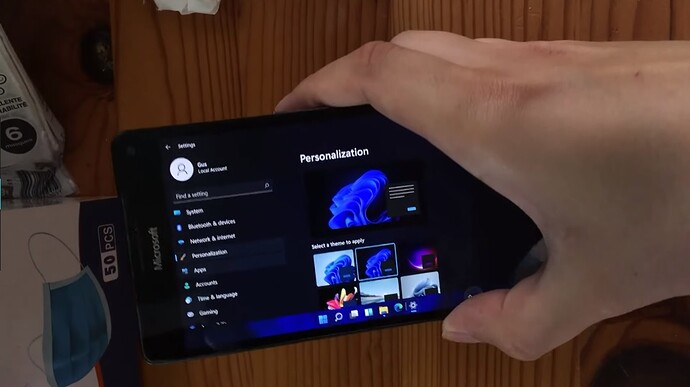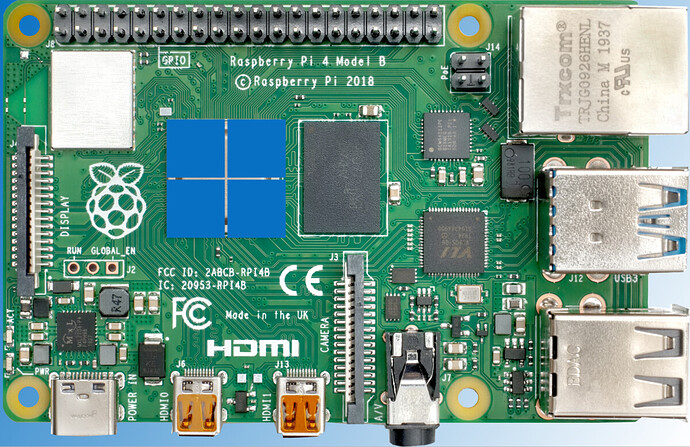My install under VirtualBox is on a 4 years old Intel i7.
Apparently the compatibility utility is overly pessimistic.
My install under VirtualBox is on a 4 years old Intel i7.
Apparently the compatibility utility is overly pessimistic.
Just installed on Intel macBook Pro using VMWare Fusion and all my 2019r1 xojo and 2020r1 built apps run just fine, I grabbed a Windows 10 image, expanded HD to 64gigs, encrypted it, added TPM and it passed all the tests.
Mine does not have a 8th Gen but 7th gen. So sadly my version does not works with Windows 11. After reading forums, blogs, a lot of Surface Book users are very angry about this.
Word is that Microsoft is reevaluating and relaxing the requirements now, and they pulled the health checker app as part of that. We’ll just have to wait and see what devices will actually be supported when release date gets closer.
Regardless of the age of the computer, if Windows was installed to boot “legacy” (MBR) instead of UEFI (GPT), turning on secure boot will not work. It will be necessary to convert the boot disk to UEFI (not the most straightforward process. A full system disk image backup is strongly recommended!) and then set the bios options for TPM and secure boot. That will in principle allow the upgrade to Windows 11. I am in process of converting an MBR boot disk to UEFI to test the theory.
If the secure boot - UEFI requirement is relaxed, then the Win 11 upgrade should be much more widely available.
Final update on my computer recent that had issues after BIOS changes: a hard reset of the CMOS and subsequent update of BIOS settings worked fine. The computer passed all current requirements for Win 11.
The conversion of a boot disk from MBR to GPT(UEFI) works.
It can be done with a command line utility (mbr2gpt) executed with Powershell in administrator mode. My disk was missing the WinRE files, so mbr2gpt did not complete the last steps. It is possible to copy them from an installation ISO or flash drive - make sure it is the same build as the computer being converted. In this case, after copying the WinRE files, reboot the computer and use powershell in admin mode again to disable and re-enable WinRE on the computer. Reboot, go to BIOS and make the changes to boot from UEFI. Secure boot can also be turned on. TPM, if it was not done before. the computer can now boot UEFI and If the hardware allows it, it can receive the Win 11 update.
It will be necessary to convert the boot disk to UEFI (not the most straightforward process. A full system disk image backup is strongly recommended!)
![]()
It can be done with a command line utility (mbr2gpt) executed with Powershell in administrator mode. My disk was missing the WinRE files, so mbr2gpt did not complete the last steps. It is possible to copy them from an installation ISO or flash drive - make sure it is the same build as the computer being converted. In this case, after copying the WinRE files, reboot the computer and use powershell in admin mode again to disable and re-enable WinRE on the computer.
![]()
![]()
![]()
I just make a backup of the files, enable UEFI, boot the windows installer, delete al partitions, press next and yo get a clean instalation in a lot less than all the “converting stuff”
No contest. A new install is the easiest!
Doing a new install, and bringing back the C: partition files from backup does not always work. Converting is definitely more effort, but it works in every case.
Figures. Even my Surface Book 2 with i7 cannot be updated to Windows 11
This device is 3 years ‘old’.
I an Mac person on the desktop but have a Windows laptop for traveling because of cost…
My laptop will be 3 years old this fall and it passed the Windows 11 checker… Guess I am lucky!
-Karen
It looks like some creative person installed Windows 11 on a raspberry pi. 

After Microsoft released the first Windows 11 build into the wild, tinkerers have got the OS running on a Raspberry Pi and Lumia 950 XL.
There are some caveats, but it’s usable.

No TPM, no problem for the Raspberry Pi 4
Here is the official reason why some computer hardware is not compatible with windows 11.
 ZDNet
ZDNet

Why did Microsoft initially cut off hardware support at Intel's Generation 8 CPUs? We finally have the answer. Hey Intel, guess which PC I'm buying? An AMD Ryzen system.
Follow-up.
I was able to install the leaked version of Windows 11 under VirtualBox without any issue.
But on the same machine, which uses an older Intel i7, Windows Insider tells me the machine cannot run Windows 11.
So for the time being, I will keep testing my apps for Windows 11 in the VM.
The latest Win 11 beta version available to insiders runs on my third generation I7 test computer, which clearly should not run the release version according to current information. I believe that Microsoft have relaxed security standards in order to have enough beta testers. I would still not have too high hopes for now. It is a wait and see situation.
I believe that Microsoft have relaxed security standards
I believe that Microsoft may be working on expanding their limits, they were so restrictive that attracted intense criticisms.
Correct. But it would appear that the change would expand compatible processors only to Gen 7 instead of Gen 8 Intel Core processors, and Gen 1 Zen processors on the AMD side. Pre Zen or pre-Gen 7 Core processors would not run Win 11 according to current information. Apparently a virtualization capability issue.
Of course, we are not certain. It is a wait and see situation.
My third generation I7 test computer currently running Win 11 beta also does not currently have TPM or secure boot activated. This would place the current beta hardware requirements on par with Win 10. I doubt that the final release will be relaxed that much. But again, nothing is certain. Let’s wait and see.
I believe that Microsoft may be working on expanding their limits, they were so restrictive that attracted intense criticisms.
After providing for years the best backward compatibility, this switch to high end, most recent processors, is a big philosophical change. In a way, they are doing something close to what Apple does: render hardware obsolete with new OS.
Too old hardware can hinder you on what you can achieve. From time to time you must create some divisions like “Win15 only runs on CPUs able to do native 128bit math and Quantum emulation, for those only able to use 64bit instructions, you must keep on win14 that will have its EOL in 5 years”.
Indeed. A number of hardware makers will be very happy with Microsoft.
Is this an opportunity for Linux distribution editors?